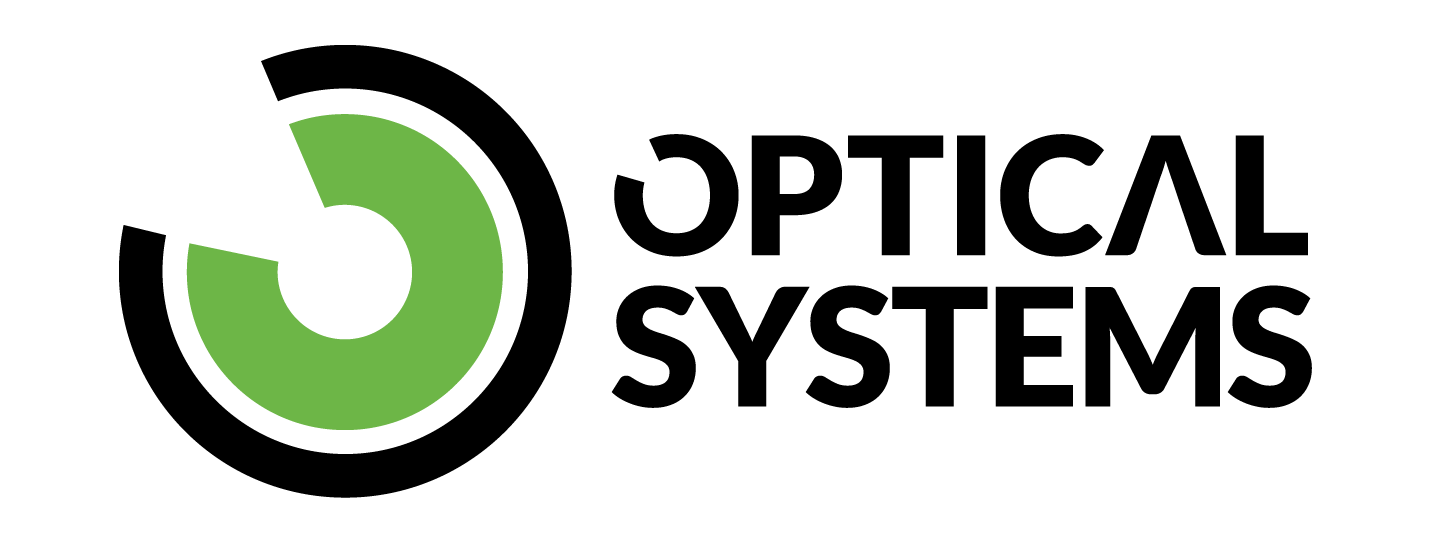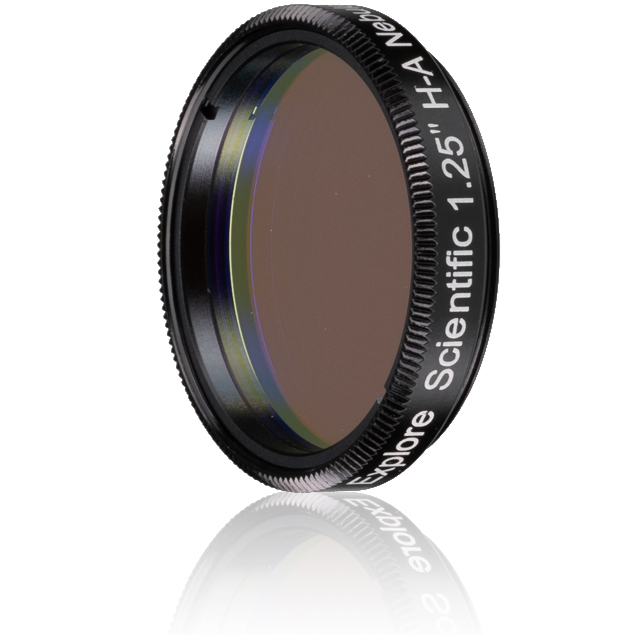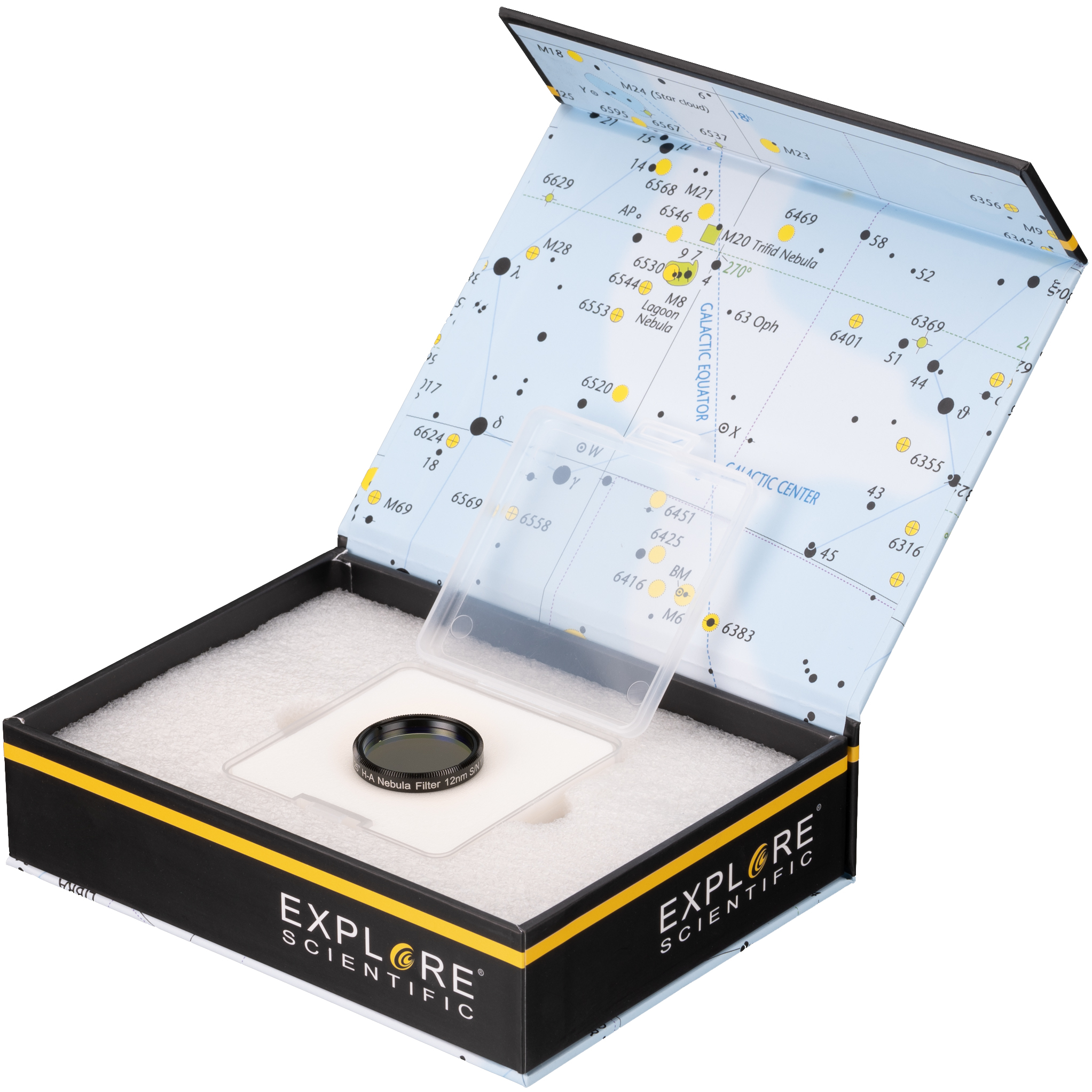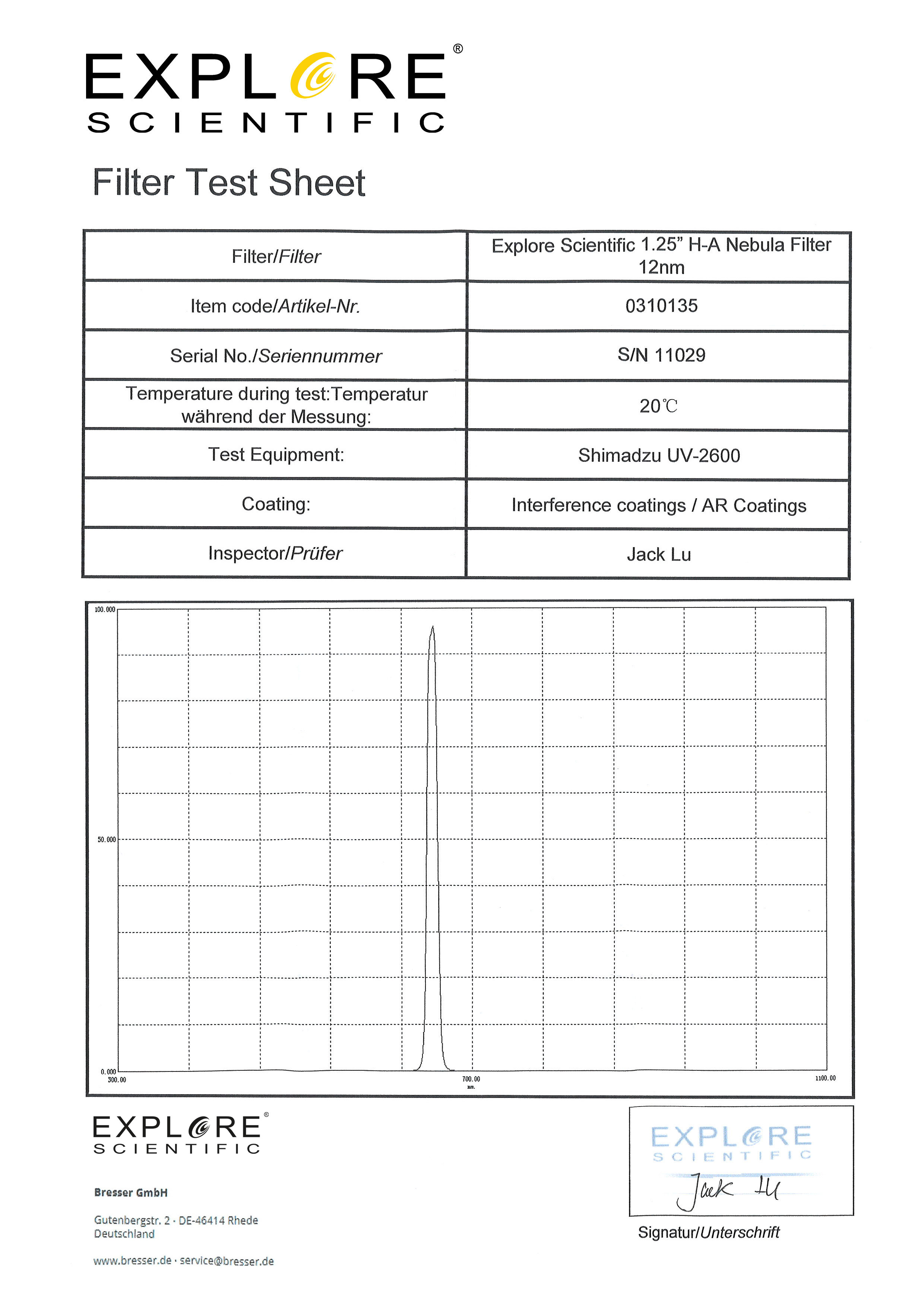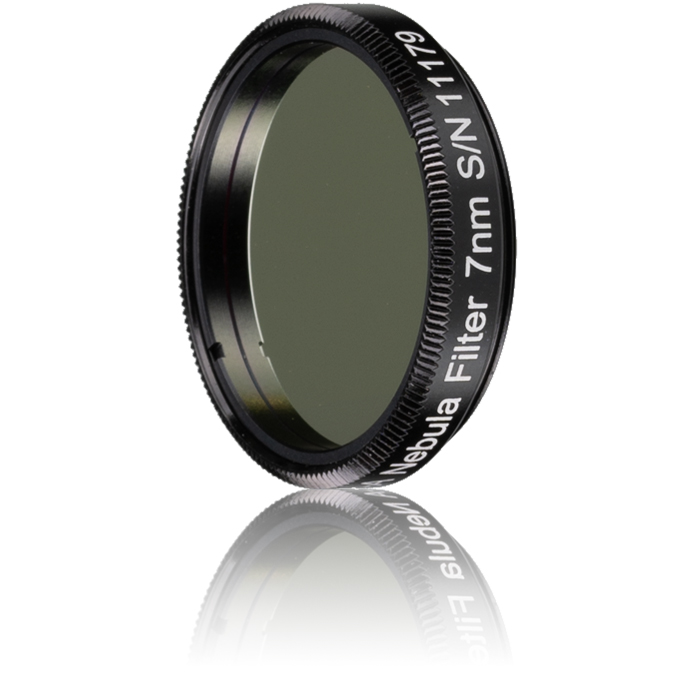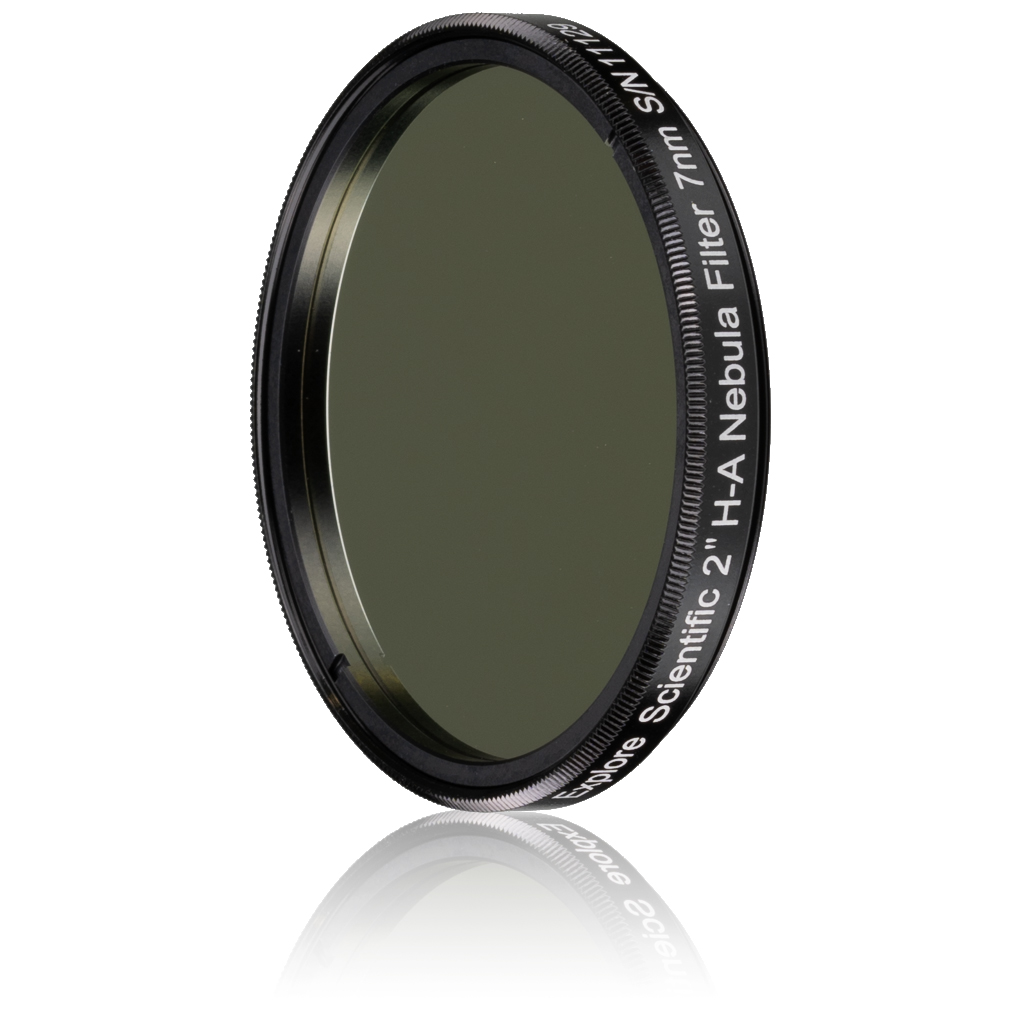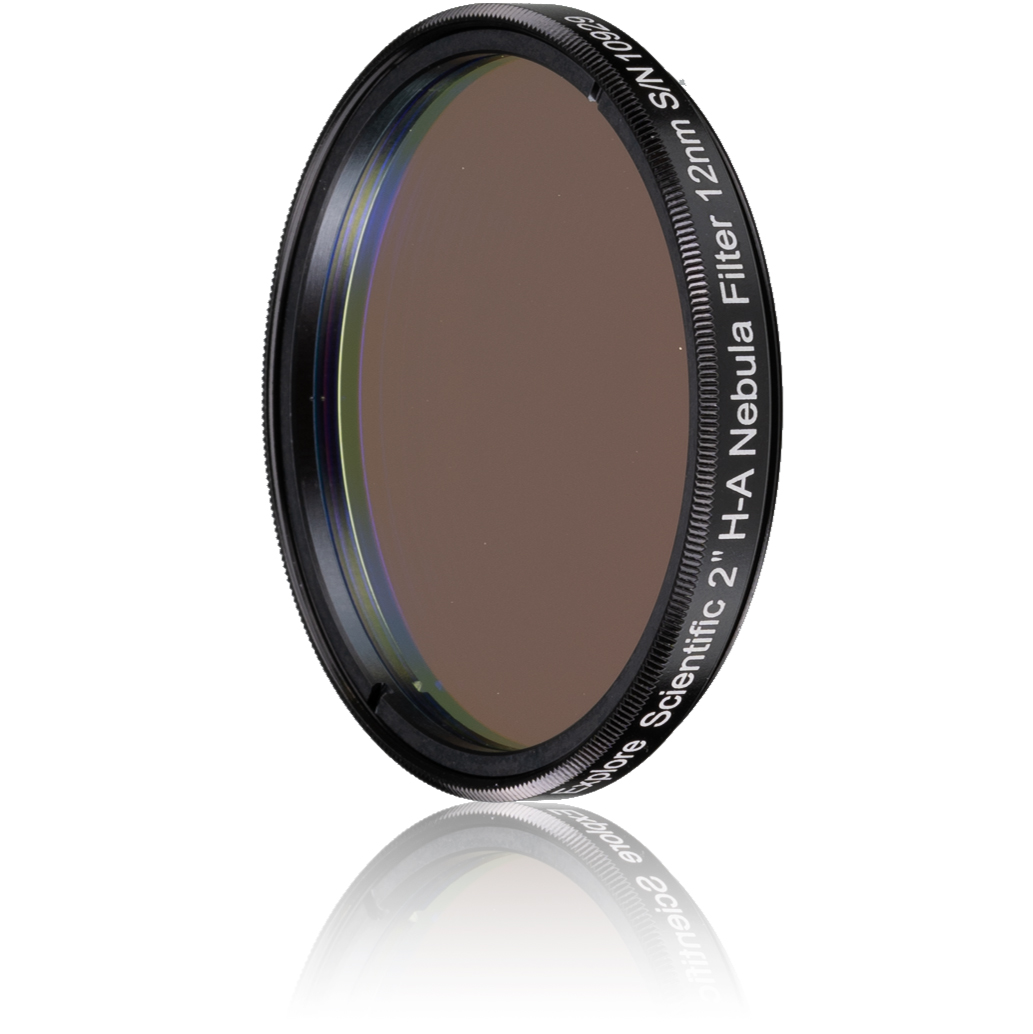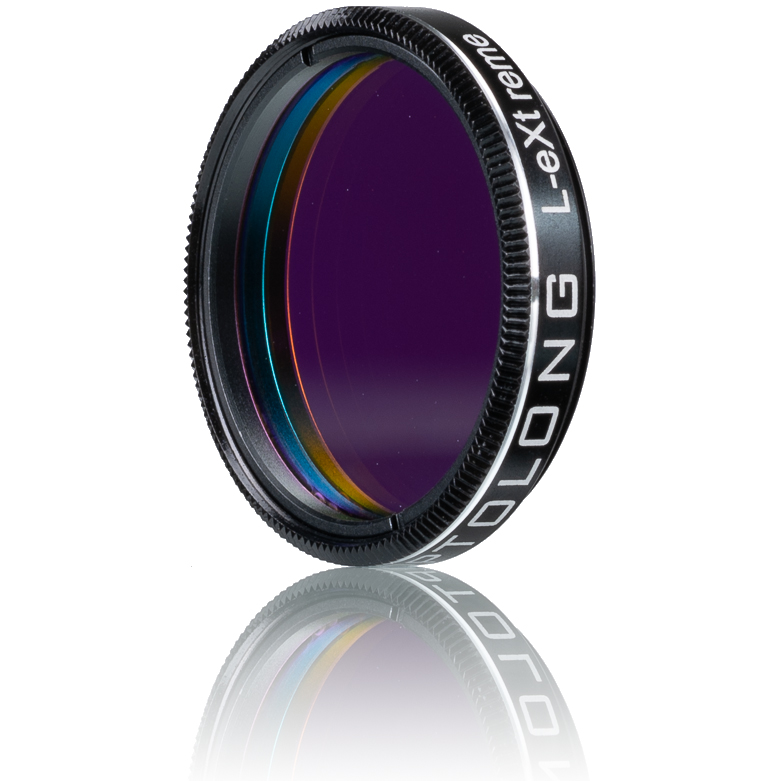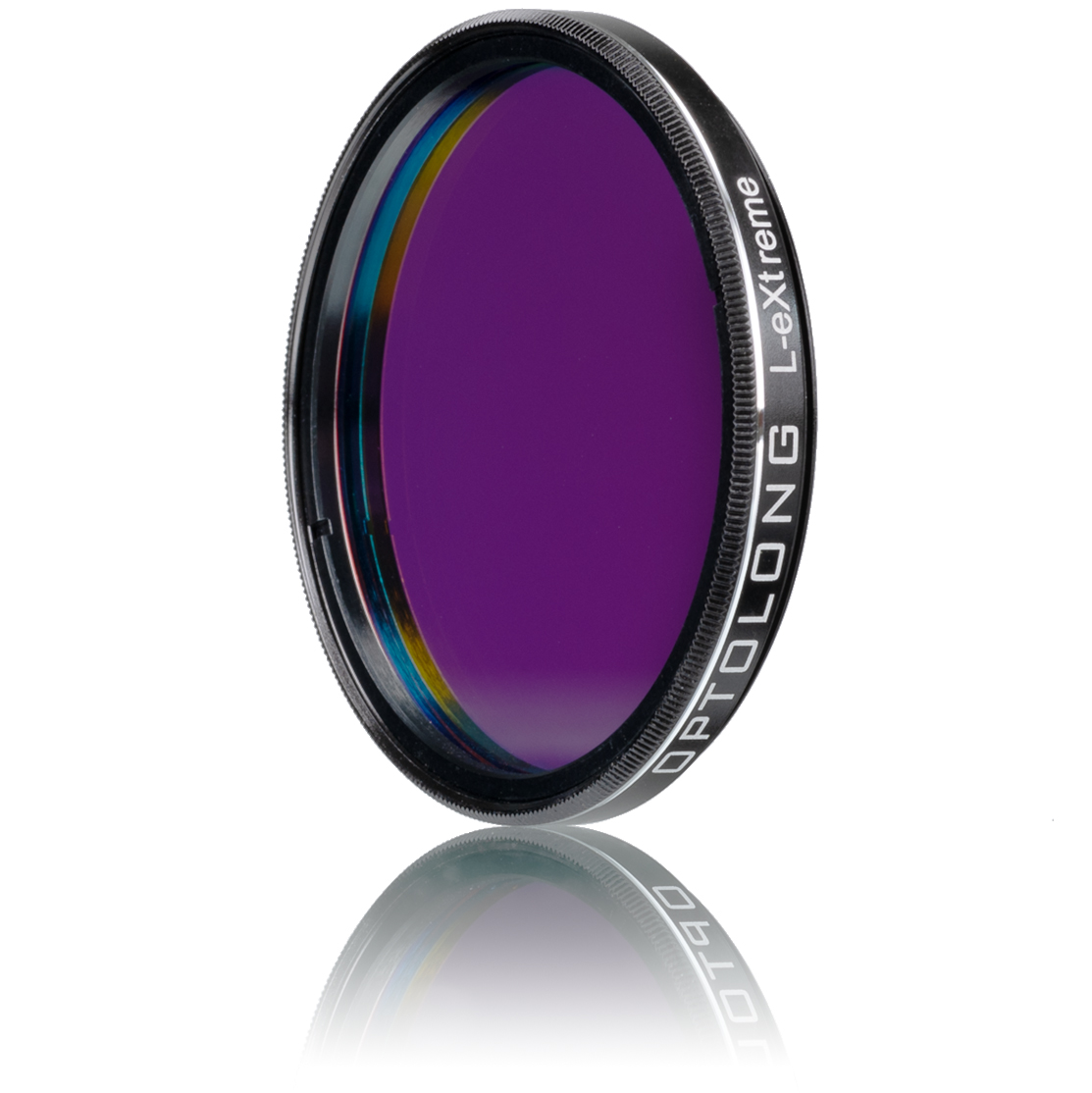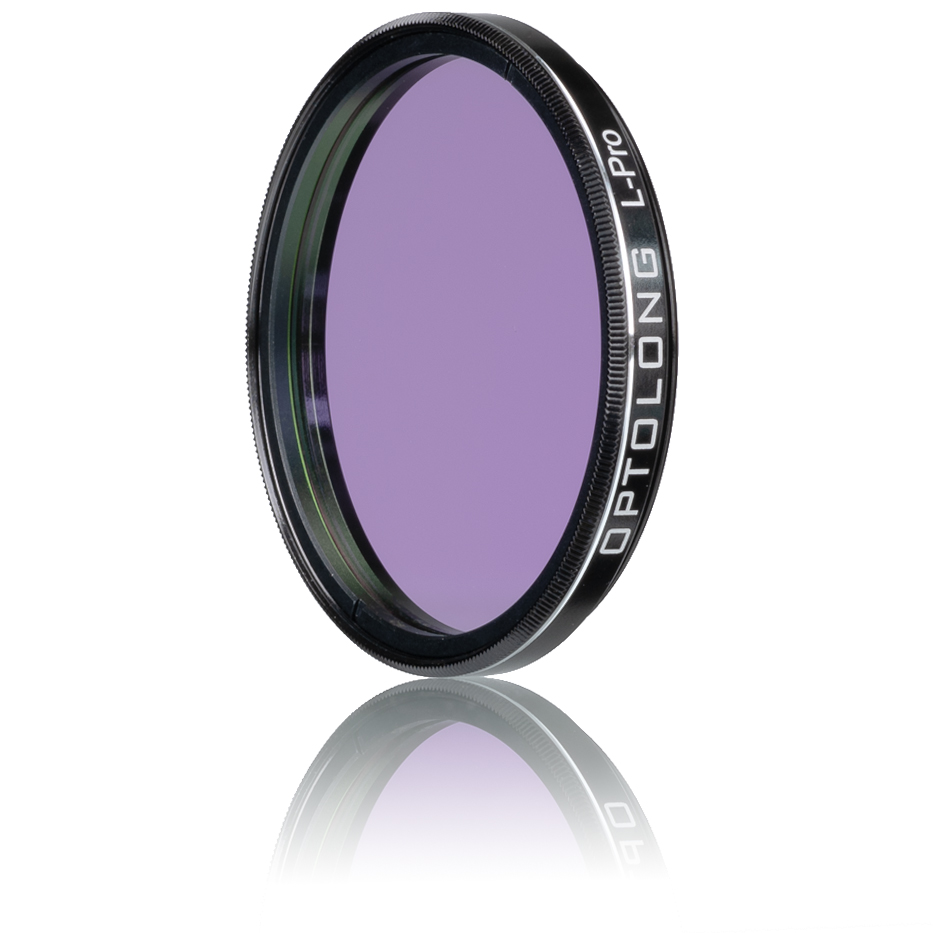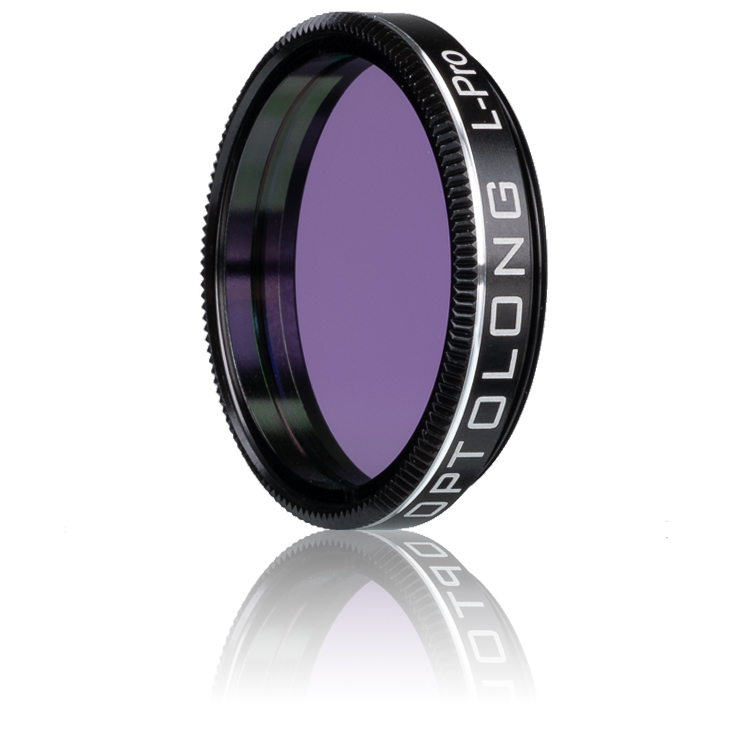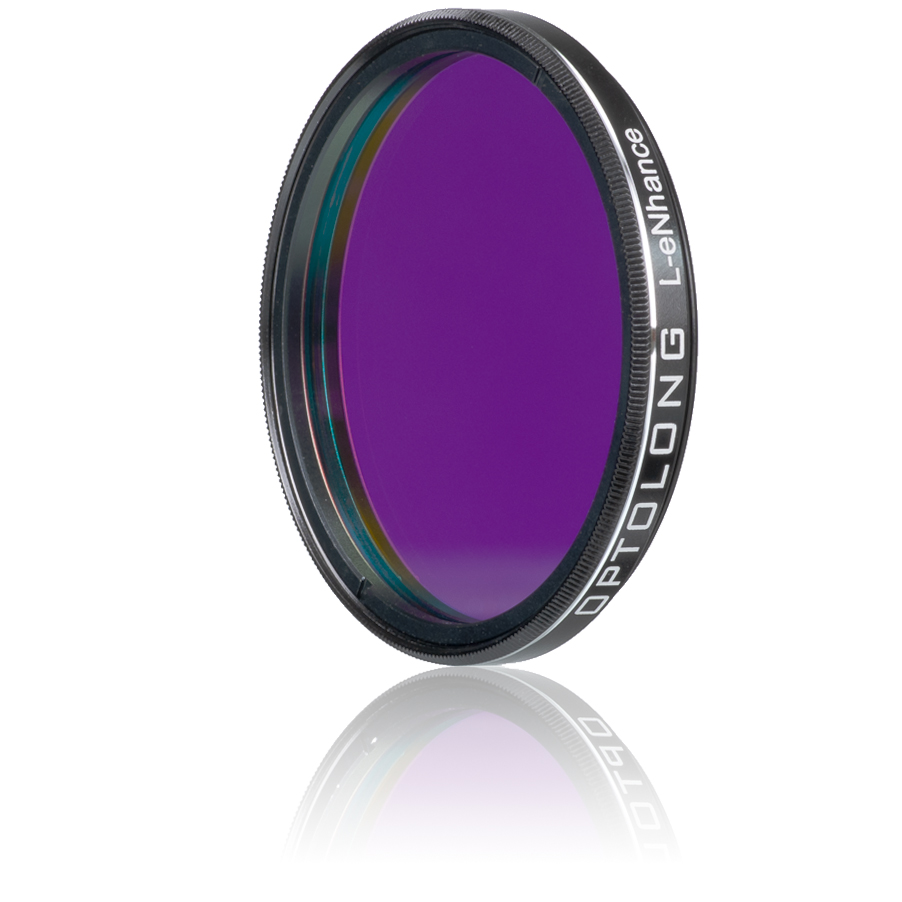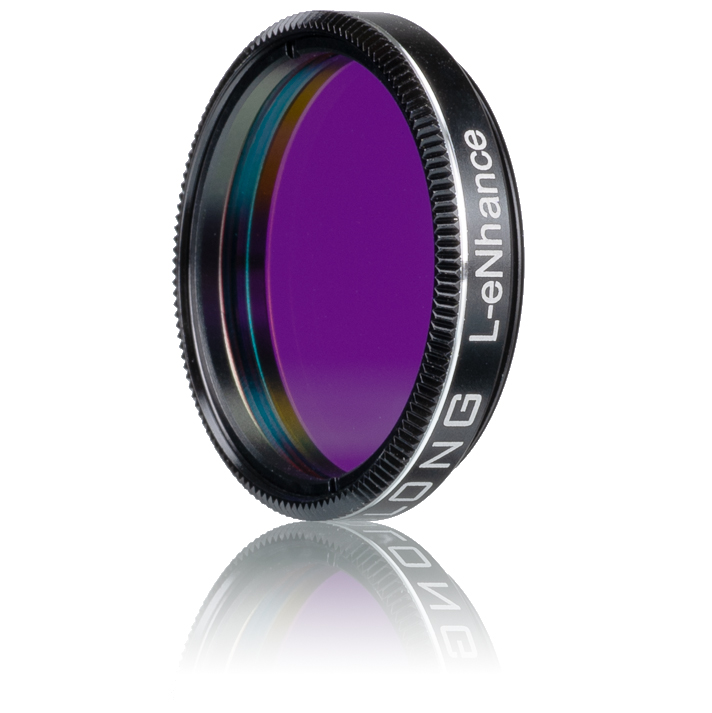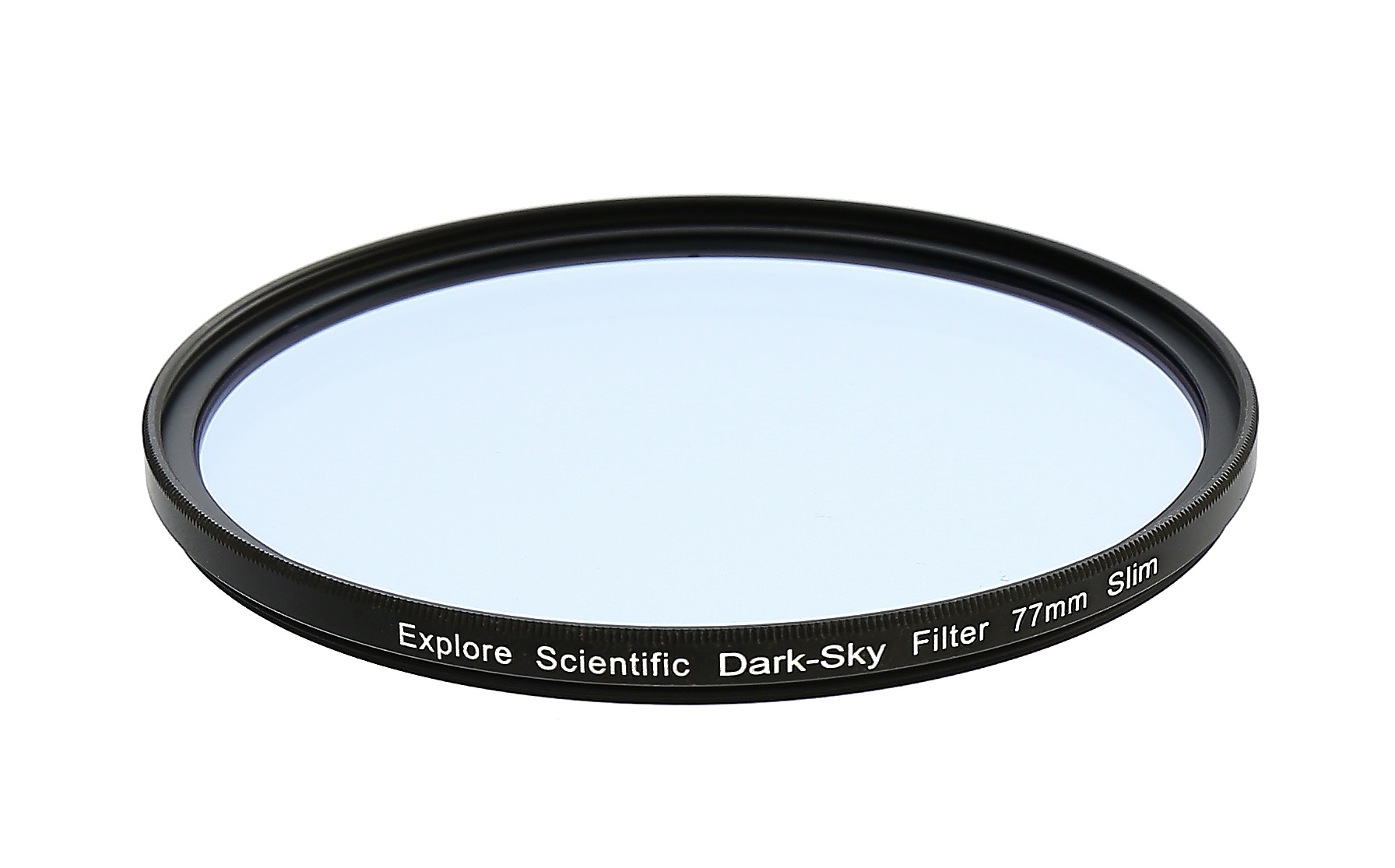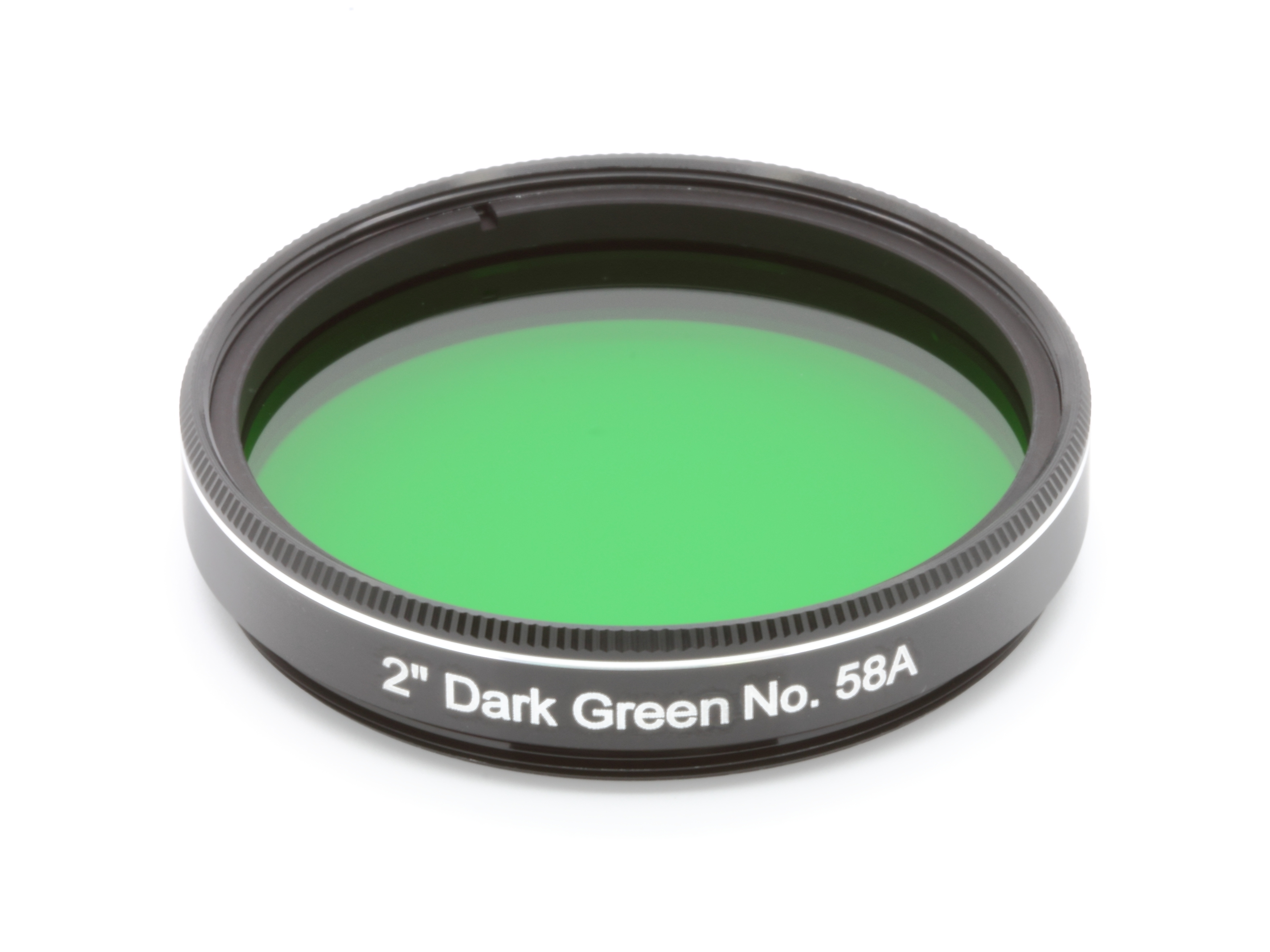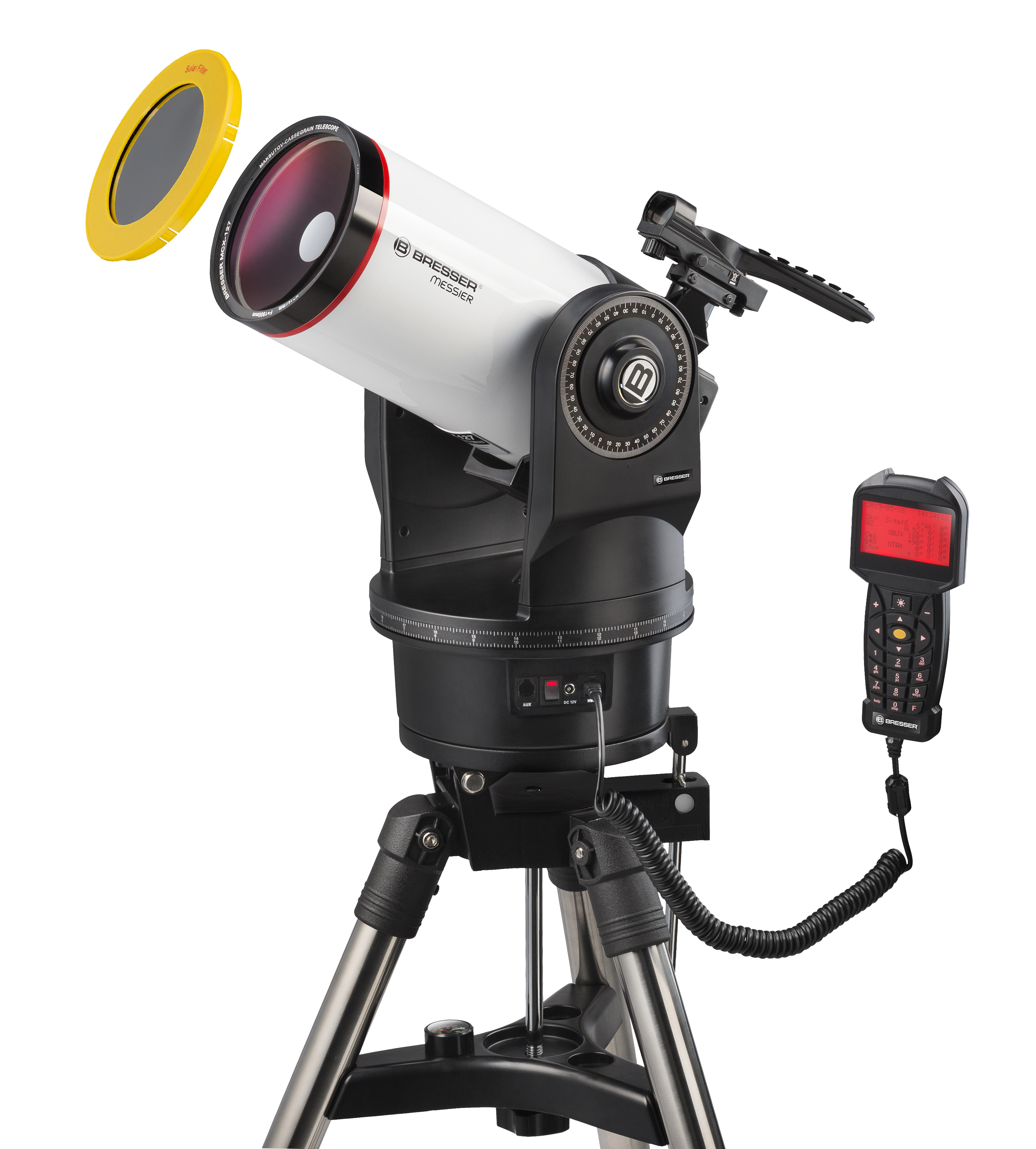The EXPLORE SCIENTIFIC H-Alpha filter allows photography of red glowing emission nebulae; ideal for use near cities, in slightly light-polluted skies.
- High-quality EXPLORE SCIENTIFIC H-Alpha filter
- Only lets pass the emission lines of hydrogen
- Absorbs all other emission lines and almost all artificial light
- Ideal for use near the city, with slightly lightened skies
- Band pass width: 12 nm
- Better contrast and more details achievable for urban astrophotographers
- Blocks almost all light from mercury and sodium vapor lamps
- Many of the red glowing emission nebulae are only visible in full expansion on photos taken with this filter
- In spite of the existing light pollution amazingly good image results are possible
- Individual test certificate included to guarantee you receive a premium filter
With BRESSER, you can enjoy a smooth introduction to the vast world of astronomy. Our detailed information ("Telescope Guide") provides valuable tips for beginners— but even experienced astronomers can use the information we provide (e.g., tables for the geographical latitude of all major world cities) as a reference.
Here is the table of contents of the comprehensive BRESSER Telescope Guide:
With BRESSER, you can enjoy a smooth introduction to the vast world of astronomy. Our detailed information ("Telescope Guide") provides valuable tips for beginners—but even experienced astronomers can use the information we provide (e.g., tables for the geographical latitude of all major world cities) as a reference.
Here is the table of contents of the comprehensive BRESSER Telescope Guide:
- 2. The View into the Starry Sky
- 2.1 Observing with the Naked Eye
- 2.1.1 Observing Constellations with the Naked Eye
- 2.2 Observing with Binoculars
- 2.2.1 Observing Planets and Moons with Binoculars
- 2.2.2 Observing Deep Sky Objects with Binoculars
- 2.2.3 Every Beginning is Easy
- 2.3 Observing with a Telescope
- 2.4 The Moon
- 2.4.1 The Moon Phases
- 2.4.2 The Far Side of the Moon
- 2.4.3 The Moon Map
- 2.4.4 Maria (Seas)
- 2.4.5 Mare
- 2.4.6 Craters
- 2.4.7 The Ray Craters
- 2.5 Observing the Solar System with a Telescope
- 2.5.1 Where are the Planets?
- 2.5.2 Planet Observation
- 2.5.3 The Position of the Planets Relative to the Sun
- 2.5.4 The Planets Introduce Themselves
- 2.5.5 Deep Sky Observation with a Telescope
- 2.6 Practical Observation Tips and Tricks
- 2.6.2 Tips for Optimal Observation Conditions
- 2.7 The Most Beautiful Objects Throughout the Year
- 4. Telescopes
- 4.1 The Telescope as an Observation Instrument
- 4.2 Optics
- 4.2.1 Refractor (Lens Telescope)
- 4.2.2 Reflector (Mirror Telescope)
- 4.3 Mechanics
- 4.3.1 Altazimuth Mount
- 4.3.2 Equatorial Mount
- 4.3.3 Drive Motors
- 4.4 Accessories
- 4.4.1 Eyepieces
- 4.4.2 Important Tips for Eyepiece Selection
- 4.4.3 Filters
- 4.4.4 Photographic Accessories
- 4.4.5 Other Accessories
- 5.1 Which Telescope for Whom?
- 5.1.1 Deep-Sky Observations
- 5.1.2 Observing Closer Planets
- 5.1.3 The Topic of Portability
- 5.1.4 Price Factor When Buying a Telescope
- 6. Useful Tables
- 6.1 Table for the Geographic Latitude of All Major World Cities
- 6.1.1 Observers in the Northern Hemisphere (N):
- 6.1.2 Observers in the Southern Hemisphere (S):
- 6.2 Lookup Table for Notable Stars
- 6.3 Getting Acquainted with the Universe - or: Distances in Space
The EXPLORE SCIENTIFIC H-Alpha filter uses the characteristic of the so-called emission nebulae. These objects glow in certain colors, the so-called emission lines. The emission lines are associated with certain chemical elements - in this case the red glowing hydrogen. This filter blocks all other colors (and therefore almost all artificial light) and lets only the emission lines of hydrogen through. Especially the interfering light of mercury and sodium vapor lamps is effectively blocked. The effect is amazing: suddenly, nebulae become visible on the photos in locations which appear completely empty without the filter.
The EXPLORE SCIENTIFIC H-Alpha Nebula Filter has been developed for astrophotography exclusively. Especially in slightly light-polluted skies many emission nebulae only become visible and are shown in full expanse on astrophotos when using this filter. The H-Alpha nebula filters make astrophotography near the city possible and the use leads to amazingly good image results despite the existing light pollution. A must for every urban astrophotographer.
The EXPLORE SCIENTIFIC nebula filters are delivered with an individual test report - so you can be sure to get high quality filters.
FEATURES
- H-Alpha filters are used for astrophotography exclusively
- Allows photography of emission nebulae that glow in the light of red hydrogen
- Many of these emission nebulae are only visible in their full expansion in photos taken with this filter
- Blocks almost all artificial light, especially from mercury and sodium vapor lamps
- Only allows the emission line of red hydrogen to pass through
- Transmission bandwidth: 12 nm
- Allows more contrast and detail for all urban astrophotographers
- Ideal for use near cities, in slightly brightened skies
- Individual test certificate included to guarantee you receive a premium filter
SCOPE OF DELIVERY
- 1x 1.25'' H-Alpha Nebula Filter
| Colour: | black |
|---|---|
| Field of application [Telescope-filter]: | Light Pollution Filter for Astrophotography |
| Material: | Glass, Plastic |
| Telescope filter type: | Nebula Filter |
